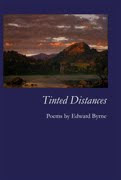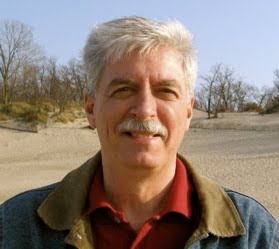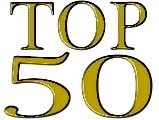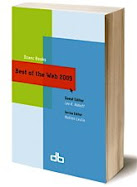 I always have held a strong belief in the close connections between painting and poetry. Even more than the other literary forms of expression, poetry writing, especially of lyric pieces, parallels the artist’s process in a number of ways. Both usually attempt to still a section from a larger context while hinting at actions before or after the frozen moment. Each wishes to vividly portray a scene so that the elements suggest a story or evoke a particular emotion. Perspective becomes crucial to obtaining a true understanding of the subject under scrutiny, and a compact presentation appears just as necessary in a lyrical poem as it may be in a framed painting.
I always have held a strong belief in the close connections between painting and poetry. Even more than the other literary forms of expression, poetry writing, especially of lyric pieces, parallels the artist’s process in a number of ways. Both usually attempt to still a section from a larger context while hinting at actions before or after the frozen moment. Each wishes to vividly portray a scene so that the elements suggest a story or evoke a particular emotion. Perspective becomes crucial to obtaining a true understanding of the subject under scrutiny, and a compact presentation appears just as necessary in a lyrical poem as it may be in a framed painting.Neither the lyric poet nor the painter, whether depicting landscape or offering portraiture, possesses the luxury of introducing extended exposition or narrative complexity. Instead, the visual harmony or contrast of objects gathered by the poet and artist must imply associations through connotation or symbolism for readers and viewers. Historically, poets and painters frequently have socialized and compared notes, whether in Paris cafés or Greenwich Village taverns.
As I have stated in a previous essay, Ernest Hemingway once confessed, “I learn as much from painters about how to write as from writers.” James Whistler thought of his artwork as “the poetry of sight.” Over the last couple of centuries, one can clearly witness an evident influence upon poetry by various movements in the art world, including Impressionism, Cubism, Abstract Expressionism, and Pop Art. My study of painting, particularly landscape and impressionist works of art, has aided me in understanding composition and placement of details in the images that fill my poems. I am fond of the Luminist painters who depicted subtle variations in landscape or seascape paintings, especially any gradual differentiation of color or light in images of sea or sky. I always advise my creative writing students to stop off at the art museum almost as often as they visit the library.
Indeed, the cooperation and enthusiastic support of officials at Valparaiso University’s Brauer Museum of Art over the years have enhanced local appreciation for the conscious linking of poetry and paintings. Poetry readings by visiting writers and students occur in the magnificent atmosphere of the museum’s main gallery each year. Surrounded by the brilliantly imaginative scenes filling canvases arrayed for the current exhibition, the poets’ visual descriptions seem to enjoy proper company.
A little more than a decade ago, the director, Richard Brauer, for whom the museum is named, and I teamed to present an anthology of ekphrastic poetry by Valparaiso authors responding to an exhibition of Charles Burchfield paintings. Of course, ekphrastic poetry—pieces written in response to specific works of art, either as an attempt to render a new insightful interpretation or as an exercise in which the poet playfully creates an alternative vision simply inspired by another’s original painting, sculpture, or other object of art—has achieved great popularity in recent times, but the genre has always been present and often has been responsible for valuable contributions, from “Ode on a Grecian Urn” by John Keats to “Self-Portrait in a Convex Mirror” by John Ashbery, just to name a couple.
More recently, since the Fall/Winter 2001-2002 issue, Valparaiso Poetry Review has been fortunate to have Gregg Hertzlieb, Richard Brauer’s successor as museum director, supplying regular commentary on cover artwork for the journal. Gregg is a poet (whose “Scraper” appears in Volume III, Number 1 of VPR) as well as a visual artist (the Volume VI, Number 2 issue of VPR highlights his artwork, Fare), and he conscientiously emphasizes continual connections seen between poetry and painting.
One noted artist, Frank V. Dudley, whose painting, Shadows and Sunlit Silence, graced the cover of the Spring/Summer 2006 issue of VPR, appears to intentionally blend poetic vision with his own stunning visual performance, even to the point of purposely using poetic titles for his pieces. As Gregg Hertzlieb wrote in his VPR commentary on Dudley’s painting: “The title Shadows and Sunlit Silence offers an example of alliteration that enhances an appreciation for the picture. The ‘sh’ and ‘s’ sounds summon up images within one's imagination of shifting sands and rustling grasses.”
The appearance of Dudley’s art as the cover for Valparaiso Poetry Review coincided with a major showing of his work in the Brauer Museum of Art. Consequently, a wonderful book, The Indiana Dunes Revealed, has resulted from that exhibition as well. As the copy for this volume explains: “The Indiana Dunes Revealed offers the first comprehensive examination of a widely collected, much loved, and ecologically significant artist. Described by art historian William Gerdts as ‘one of the finest painters working in the Midwest in the first decades of the twentieth century,’ Frank V. Dudley (1868-1957) was a native of Wisconsin who studied at the Art Institute of Chicago before going on to establish a long exhibition record both there and across the country. He also dedicated over forty years of his professional life as a landscape painter to the promotion and preservation of the Indiana Dunes. Today, thanks in part to Dudley’s efforts, this unique geographical region enjoys state and federal protection and provides ecologists from around the world with a living laboratory unlike anything else.”
The Indiana Dunes Revealed features “150 color and 70 black-and-white images,” and “it celebrates Dudley’s unique artistic legacy, documents the exhibition, and demonstrates the painter’s importance to environmentalists and naturalists, especially during the many years of national debate over the designation of parts of the dunes as a national park. In some areas, Dudley’s painting may be the only record of a lost dunescape, and as the struggle between development and preservation continues, his enduring art reminds us of the need for a sustainable environment for the Great Lakes.”
The authors of this fine volume are James R. Dabbert, senior lecturer in English at the Illinois Institute of Technology in Chicago; Richard H. W. Brauer, emeritus director of the Brauer Museum of Art; Gregg Hertzlieb, director/curator of the Brauer Museum of Art; independent art historian Wendy Greenhouse; William Gerdts, professor emeritus of art history at the Graduate School of the City University of New York; Joan Gibb Engel, activist and writer on Dunes ecology; and J. Ronald Engel, professor of social ethics at Meadville Theological School of Lombard College, and the author of Sacred Sands: The Struggle for Community in the Indiana Dunes.
The Indiana Dunes Revealed: The Art of Frank V. Dudley, University of Illinois Press, 2006























1 comment:
I think you got a great blog!! Thank you for that. I'm definitely going to add u to my favorite :)
I hope you can visit my forumat http://www.ESLDF.com/ - ESL Discussion Forum
Post a Comment